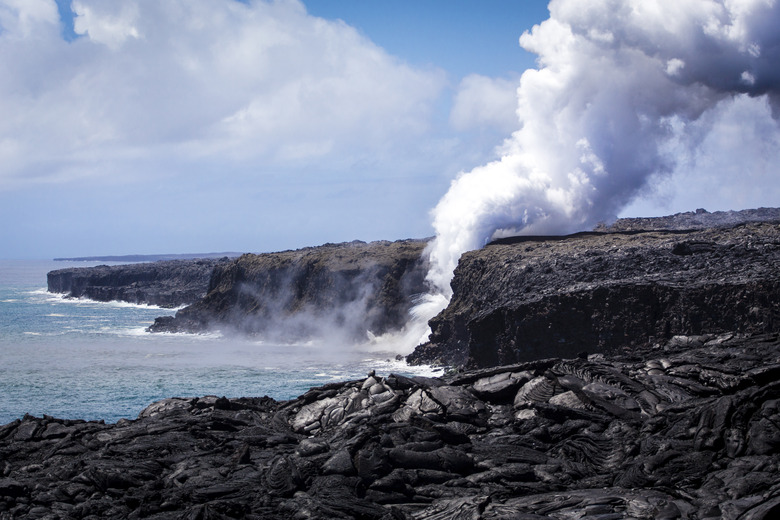Physical Address
Suite 5, 181 High Street,
Willoughby North NSW 2068
Physical Address
Suite 5, 181 High Street,
Willoughby North NSW 2068

Convection currents transfer heat from one place to another by mass motion of a fluid such as water, air or molten rock. The heat transfer function of convection currents drives the earth’s ocean currents, atmospheric weather and geology. Convection is different from conduction, which is a transfer of heat between substances in direct contact with each other.
Convection currents rely on the constant cyclical motion of air, water and other substances to distribute heat. As heated air rises, for example, it pulls cooler air into its place — where it can be heated, rise, and pull in more cool air.
Convection currents form because a heated fluid expands, becoming less dense. The less-dense heated fluid rises away from the heat source. As it rises, it pulls cooler fluid down to replace it. This fluid in turn is heated, rises and pulls down more cool fluid. This cycle establishes a circular current that stops only when heat is evenly distributed throughout the fluid. For instance, a hot radiator heats the air immediately around it. The air rises toward the ceiling, pulling cooler air down from the ceiling into the radiator to be heated. This process repeats until the air in the room is evenly heated.
Convection drives the Gulf Stream and other currents that turn over and mix up the waters in the world’s oceans. Cold polar water is drawn down from higher latitudes and sinks to the ocean bottom, pulled down toward the equator as lighter, warmer water rises to the ocean’s surface. The warmer water is pulled northward to replace the cold water that’s been pulled southward. This process distributes heat and soluble nutrients around the world.
Convection drives the circulation of air in the earth’s atmosphere. The sun heats the air near the earth’s equator, which becomes less dense and rises upward. As it rises, it cools and becomes less dense than the air around it, spreading out and descending toward the equator again. These constantly moving cells of warm and cold air, known as Hadley Cells, drive the continual circulation of air at the earth’s surface that we call wind. Atmospheric convection currents are also what keep clouds aloft.
Geologists believe the molten rock deep within the earth circulates by convection currents. The rock is in a semi-liquid state and should behave like any other fluid, rising up from the bottom of the mantle after becoming hotter and less dense from the heat of the earth’s core. As the rock loses heat into the earth’s crust, it becomes relatively cooler and more dense, sinking back down to the core. These constantly circulating cells of hotter and cooler molten rock are thought to help heat the surface. Some geologists believe convection currents within the earth are a contributing cause of volcanoes, earthquakes and continental drift.